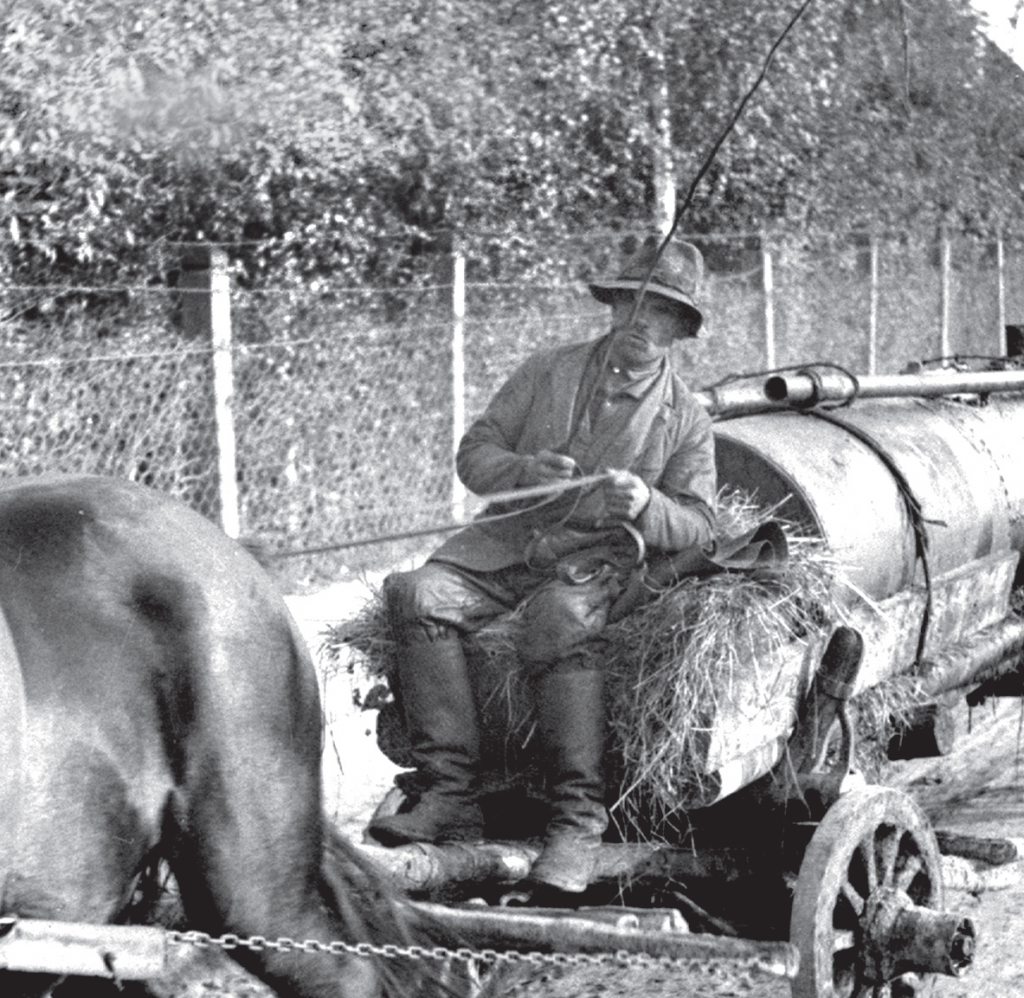Franciszek “Ropniok” Haluch (1810–?) – a peasant who had more oil than crops

The seller of oil from his own pit
Franciszek Haluch, dubbed “Włościanin (small farmer)” or “Ropniok (rigger)”, was born in 1810 in Siary. The date of his death is unknown. On his land, oil seeped on the surface on its own and to this day this place is called “Ropniokówka (rock oil pit)”. Franciszek Haluch collected it in Bełkotka *, transported to Grybów, Poznań, Sieradz, and Hungary, and sold as tar**. Initially, Haluch bought maize for the money from oil sales and sold it in his village.
Peasant measure of success
In connection with the successes of Łukasiewicz and other pioneers of the oil industry, the demand for crude oil increased significantly. Haluch established an oil mine on his own premises – he had 8 shafts, according to Edward Windakiewicz, who conducted a visitation at Haluch’s mine in 1874.
Haluch quickly became a legendary figure. He was envied because of the wealth he had acquired from oil extraction. He was said to count his money by the bucket and his daughters had plentiful dowries. He used to scatter money on the street sometimes – he was merry to see children gather it. “Ropnioki”, meaning the Haluch family, had so much money that they shared it by quarters, the measurement unit used to measure grain (32 litres).
The local patron and progenitor of the petroleum family
Franciszek Haluch was an extremely generous man. He funded a stone figure on the fence near the façade in Biecz, which is still evident from the inscription on the plinth. Its cost amounted to about 250 Austro-Hungarian guldens – for comparison: a mining technician earned around 40 guldens per month. Haluch also bought a chalice for the orthodox church in Rychwałd (today Owczary).
“Ropniok” started the family tradition: his grandsons and great-grandchildren worked all over the world as oilers – for example, Franciszek’s grandson, Jan Haluch, searched for oil in Sumatra.
* “In many towns of Podkarpacie (Subcarpathian region) there are natural seeps of crude oil and natural gas. Of all the geological traces of bitumen seeps registered in this area, the most famous one was located in the forests near Iwonicz-Zdrój – «Bełotka». In a little pond surrounded by a stone wall, the water «bełkoce» (bubbles) due to the escape of natural gas, which gave rise to the name. Since the beginning of its existence, the health resort «bełkotka» in Iwonicz has been a great attraction for patients, a source of inspiration for painters and poets “- Edward Marszałek, Płonące źródło z iwonickiego lasu – Karpaty Polskie (The flaming spring from Iwonicz forest) 2011, in: Karpaty Travel.
** “Sometimes the term «mineral tar» is applied to coal tar used in medicine as a standardised product under the name Prodermina”, in: Wikipedia. See also: Karolina Pachla-Wojciechowska, Zagroda maziarska w Łosiu, in: Dni Dziedzictwa.
Inspirations:
- Dziegieć (Tar), in: Skarbiec Łemkowszczyzny (The treasures of the land of Lemkos)
- Dziegieć (Tar), in: Wikipedia
- Marszałek Edward, Płonące źródło z iwonickiego lasu – Karpaty Polskie (The flaming spring from Iwonicz forest – Polish Carpathians), Spała 2011
- Pabis Tadeusz, Śladami gorlickich naftowców (Trails of Gorlice Oilmen), Nowy Korczyn 1996.
- Ślawski Tadeusz, Początki i rozwój kopalnictwa naftowego na Podkarpaciu w historycznym zarysie (Beginnings and development of petroleum mining in the Subcarpathian region in a historical outline), Biecz 1997.
- Windakiewicz Edward, Olej i wosk skalny w Galicji (Petroleum and earth wax in Galicia), Lviv 1875
Source of the photographs: National Digital Archive
(Note! The picture does not present the image of Franciszek “Ropniok” Haluch and is of illustrative character. The subject of the photograph is “A peasant wagon distributing oil in barrels in Boryslav”)

